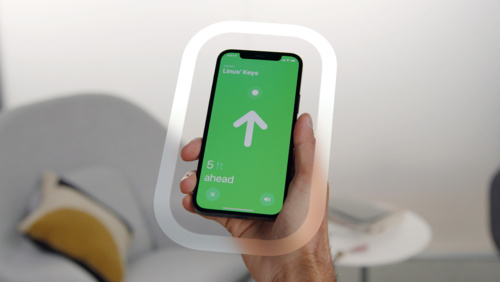MartianCraft is known for developing first-in-class mobile software solutions, but did you know we also design connected hardware solutions?
In recent years, more and more clients have needed connected external devices to enhance and complete their mobile product. One example is our project for Fall Call Solutions, LLC, a company that specializes in helping elders age in place.
Fall Call apps let elder users request help from care groups and optionally connect to a central monitoring service for emergency assistance. As the apps’ user base grew, the need for an external accessory became apparent. What if the user was away from their phone or watch and needed assistance? This need spawned an effort to partner with a hardware provider to design a jewelry-inspired pendant with built-in Bluetooth. Now, users can press a button on their pendant to connect to a phone running a Fall Call app. For more information, visit Fall Call and read the partnership press release.
This solution was built on Bluetooth Low Energy. For the remainder of this two-part post, we’ll focus on another wireless communication technology called ultra-wideband, or UWB — specifically Apple’s UWB solution with the Nearby Interaction framework and Apple U1 chip-enabled devices, including AirTags. UWB provides precise location and distance ranging, much like the older iBeacon technology but more predictably and accurately. In fact, UWB RF ranging can detect distances as close as a few centimeters! The new Apple-designed U1 chip uses UWB technology for spatial awareness.

Apple announced the Nearby Interaction framework, or NI, at WWDC 2020. Initially, it was limited to Apple U1 chipset-enabled devices, beginning with the iPhone 11 and quickly including Watch Series 6 and SE (2nd gen), the HomePod mini, and the Apple AirTag.
The NI framework opened the door for third-party developers to write software to interact with the U1 chip for, among other features, device discovery and connectivity, establishing NI sessions, and distance ranging with other U1-compatible Apple devices. (Connecting U1-compatible devices was limited to two or more iOS devices, though. For example, you couldn’t discover and connect to an AirTag — and likely never will, for security reasons.)
At WWDC 2021, Apple opened interoperability with their U1 chip to other developers, paving the way for third-party solution providers to offer products compatible with Apple U1 chip and MiFi-approved devices.
UWB offers several advantages over straight BLE ranging. For instance, UWB — unlike “narrow” band wireless technologies — has a bandwidth range from 500MHz to several GHz, providing stability, low interference, and precision even in congested environments. A few manufacturers took note and began developing solutions. One hardware solution provider is Qorvo, with its DWM3001CDK test evaluation board. This is a complete UWB, FiRa compliant, Apple U1-interoperable test evaluation board.
Here at MartianCraft, we took an interest in this board and started looking into prototyping apps that take advantage of the Apple U1 chip and the NI framework.
Last year, at WWDC 2022, the NI framework received a few updates, including support for precisely locating nearby objects. Apple provided a sample project to go alongside its What’s new in Nearby Interaction session video. In this sample project, two U1-compatible iPhones demonstrated the ARKit enhancements in iOS 16 that provide the visual-spatial power to precisely locate stationary objects. One iPhone ran an ARKit session which, in turn, established an NI session, while a second iPhone acted as the stationary object. The app theme simulates a museum visitor searching for the next exhibit.
Using this project as the base, we adapted the stationary object to use the Qorvo DWM3001CDK evaluation development board mentioned above. Again, this is a UWB transceiver module with a small size and energy footprint, giving it great flexibility. It’s fully aligned with industry FiRa Consortium PHY, MAC, and certification development, and it works with NI software and U1 hardware.
The following video (view on YouTube or below) demonstrates the change to Apple’s sample code to work with the Qorvo board third-party device. In the second part of the video, I talk about the Qorvo board itself.
As you can see in the video, the user interface looks familiar to those who have used the “Find” option in Apple’s Find My app to locate an AirTag. The circle radius and directional arrow offer visual cues about the distance and direction to the next exhibit.
This is one example of the power of UWB technology combined with rich media interaction to guide users to places and things around them. It’s easy to see other areas where this technology could apply. Some we’ve seen before, like unlocking your car or home as you approach, or tagging inventory in a warehouse. These are not new ideas, but they have yet to be built with such tight integration with Apple UWB hardware and software solutions.
Look for a follow up post where we dig into more examples of UWB, including the latest advancements in background support with NI. Imagine not having to open an app to communicate with U1-interoperable stationary objects. Much like applications using geofencing, as you get close to an object, say within a meter, you could receive a notification with choices to interact with the object.
One important caveat about UWB is that it is not available in some countries. See Apple Support documentation for more information. However, at MartianCraft we’re excited about the future of UWB in the many markets where it is supported.
I hope you enjoyed this article. Please get in touch if you have a need for UWB in your product or solution.


